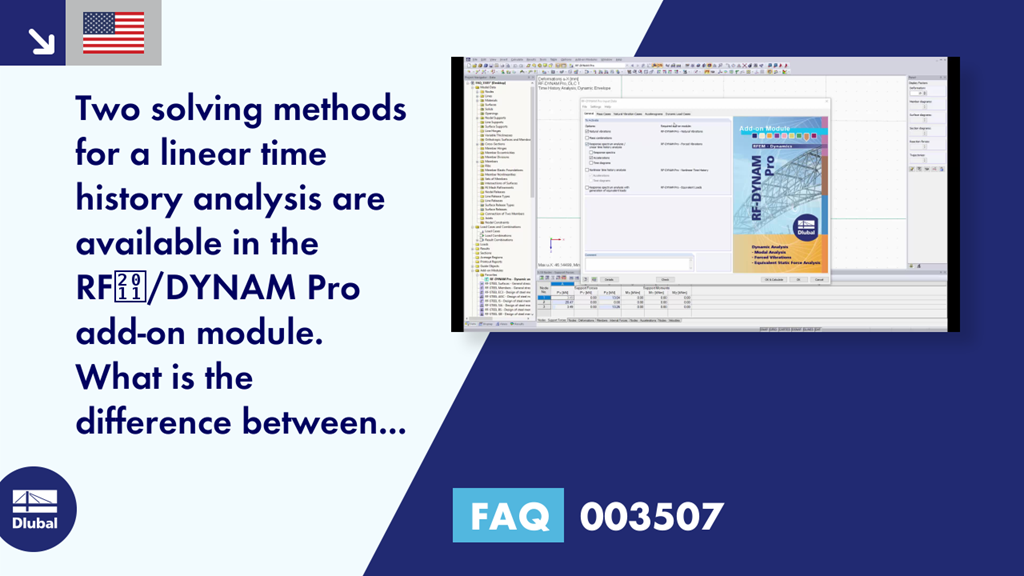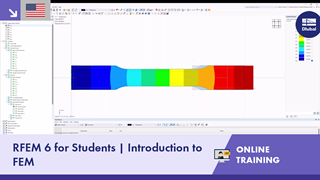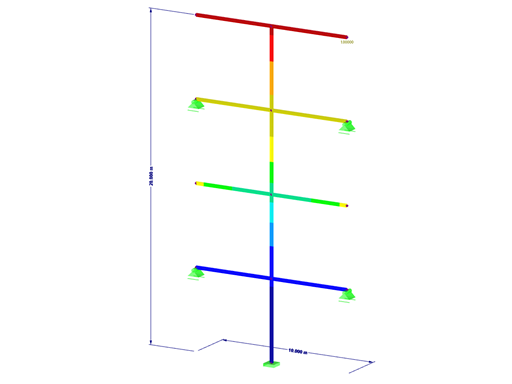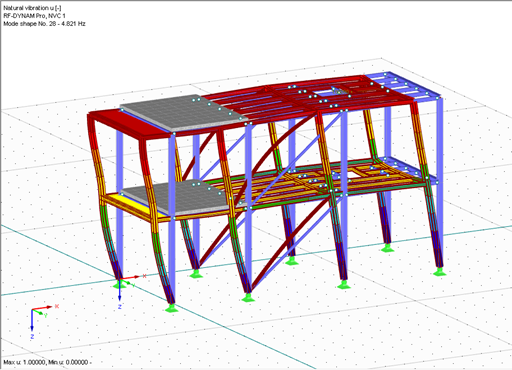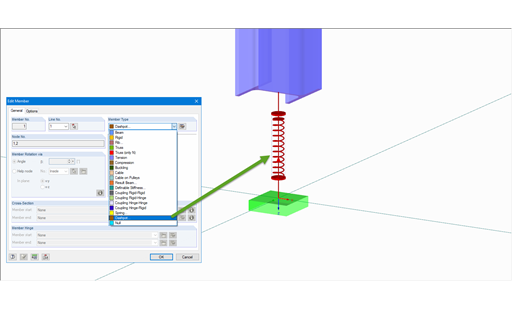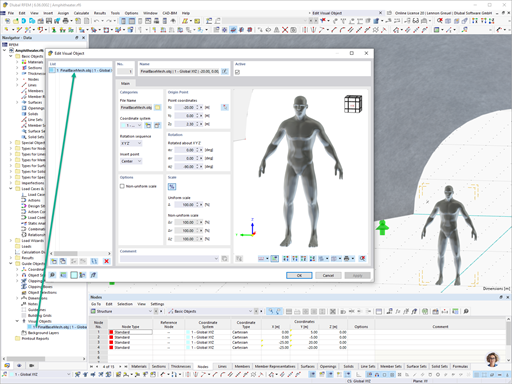Question:
Two solving methods for a linear time history analysis are available in the RF‑/DYNAM Pro add-on module. What is the difference between them?
Answer:
Both solving methods - the "linear modal analysis" and the "linear implicit Newmark analysis" - are available.
Linear Modal Analysis
This solving method uses a decoupled structure that is based on eigenvalues and mode shapes of the structure. It is necessary to assign a defined natural vibration case.
This method should only be used if there is a sufficient number of eigenvalues of the structure calculated in the natural vibration case. This means that you should pay attention to achieve an effective modal mass factor of the total structure of approximately 1 in all governing directions. If this is not possible, this method will lead to inaccurate results.
Linear Implicit Newmark Analysis
This is a direct time step method that does not require a natural vibration case, and requires enough small time steps to achieve the exact results.
This method is recommended for complex structures, which would require a very large number of mode shapes in order to achieve an effective modal mass factor of about 1.
If a sufficient number of eigenvalues can be guaranteed by means of the linear modal analysis, both solving methods lead to approximately the same results. For more information about both methods, read the RF‑DYNAM Pro manual.
